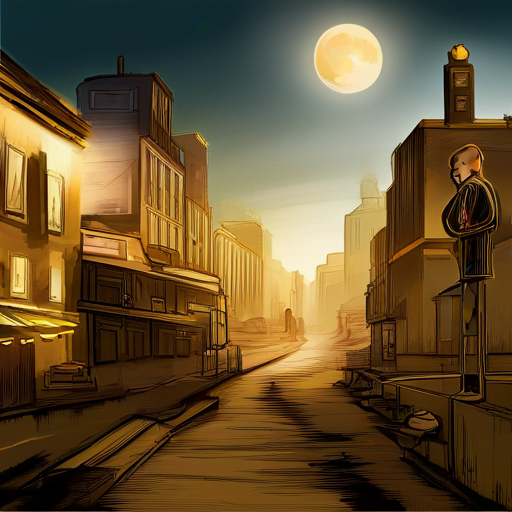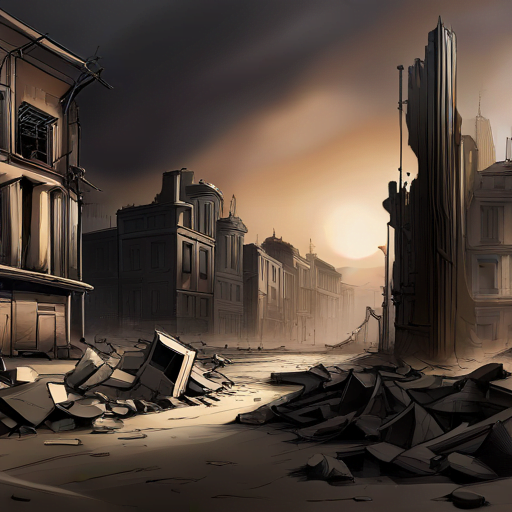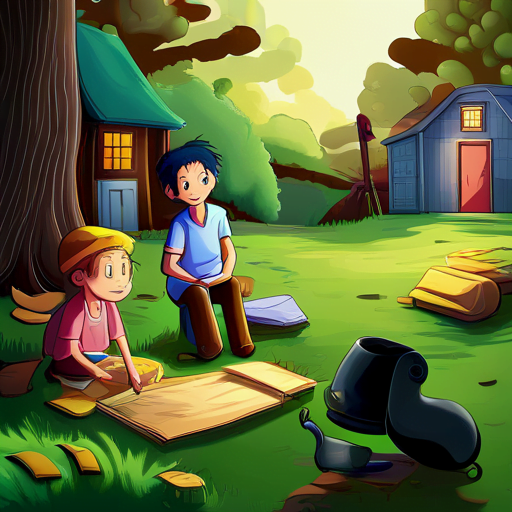When you open a book, the first thing you notice is the setting. Whether it’s a bustling city, a desolate wasteland or a cozy countryside, the setting sets the stage for the story that’s about to unfold.
But did you know that the setting also plays a crucial role in establishing the tone and mood of a story? As a reader, you may not consciously think about it, but the setting can affect how you feel about the story and its characters.
For example, a dark and eerie forest can create a sense of foreboding and mystery, while a sunny beach can convey a feeling of relaxation and joy. The setting can also reflect the cultural and historical context of the story, providing important context for the reader.
In this article, we’ll explore the impact of setting on establishing tone and mood in a story, and how authors can use setting to create a more immersive reading experience.
Table of Contents
The Role of Setting in Establishing Tone and Mood

You’re transported to a different world when the author uses vivid descriptions of the environment, immersing you in the character’s emotions and experiences.
The setting plays a crucial role in establishing the tone and mood of a story. It sets the stage for the reader’s imagination and allows them to visualize the surroundings and characters.
The tone is the author’s attitude towards the subject matter, while the mood is the feeling or atmosphere the author creates for the reader. If the setting is dark and ominous, the tone and mood will likely be suspenseful and eerie. On the other hand, if the setting is bright and cheerful, the tone and mood will likely be optimistic and joyful.
As a reader, the setting helps you understand and connect with the characters and their experiences, making the story more engaging and memorable.
Cultural and Historical Context

As we delve into the cultural and historical context of a narrative, we’re transported to a different time and place. We immerse ourselves in the sights, sounds, and values of a bygone era.
The setting of a story can provide crucial information about the societal norms and beliefs of a particular time and place. This can greatly impact the tone and mood of the narrative. For example, the dark and oppressive setting of George Orwell’s 1984 reinforces the bleak and hopeless tone of the story. Meanwhile, the lush and vibrant setting of F. Scott Fitzgerald’s The Great Gatsby contributes to the glamorous and extravagant mood of the novel.
By considering the cultural and historical context of a story’s setting, we can gain a deeper understanding of the author’s intentions and the message they’re trying to convey.
Using Setting as a Character

The setting becomes a living, breathing entity in the narrative, impacting the characters and their actions, evoking a visceral response from the audience.
When the setting is used as a character, it takes on a life of its own, shaping the story in a unique way. The landscape, weather, and atmosphere all contribute to the mood and tone of the story, creating a sense of tension, danger, or comfort.
By using the setting as a character, the author can develop a deeper understanding of the world they’re creating and provide a more immersive experience for the reader. The setting can also be used to foreshadow events or symbolize the internal struggles of the characters, adding another layer of complexity to the narrative.
Ultimately, by treating the setting as a character, the author can create a more dynamic and engaging story that resonates with the reader long after they’ve put the book down.
Setting and Genre

Using the environment to convey a specific genre can transport readers into a different world, invoking a sense of familiarity or uncertainty depending on the writer’s intentions.
The setting can create a mood that sets the tone for the story. For example, a horror story set in a dark, abandoned asylum will create a sense of fear and dread, whereas a romantic story set in a beautiful, idyllic countryside will evoke feelings of love and warmth.
The setting can also be used to establish cultural or historical context, such as a Western set in the American frontier or a dystopian novel set in a post-apocalyptic world.
Whatever the genre, the setting can be a powerful tool in creating an immersive reading experience.
Balancing Setting and Character

You need to find the perfect balance between the environment and the characters in your writing to create a captivating and believable world.
Your setting should complement your characters, and your characters should complement your setting. If your story is set in a post-apocalyptic world, for example, your characters should reflect the harsh and unforgiving environment they live in.
The setting should also be described in a way that adds to the mood and tone of the story. Maybe the sky is always dark and gloomy, or the streets are always empty and silent. These details can help establish a sense of fear or hopelessness.
On the other hand, if your story is set in a sunny beach town, your characters should be carefree and lively, and the setting should be described in a way that makes readers feel relaxed and happy.
It’s important to remember that the setting is not just a backdrop; it’s an integral part of your story. So take the time to find the right balance between your characters and your environment, and your readers will be transported to a world that feels real and immersive.
Frequently Asked Questions
What is the definition of tone and mood in a story?
When you’re reading a story, you might notice that certain words, phrases, and descriptions create a certain feeling or atmosphere.
This is what we call the tone and mood of a story. The tone refers to the author’s attitude towards the subject matter, while the mood is the emotional atmosphere that the story creates for the reader.
For example, a story with a dark and ominous tone might create a mood of fear or suspense.
These elements are important because they can greatly affect how you interpret and react to the story.
How do characters interact with the setting to create tone and mood?
When you’re reading a story, the characters and setting work together to create a certain feeling or atmosphere.
The way characters interact with their surroundings can establish the tone and mood of the story. For example, a character’s reaction to a dark and eerie forest can make you feel scared or uneasy. On the other hand, if a character is happy and carefree in a sunny meadow, it can make you feel joyful and light-hearted.
The setting can also affect the way characters behave and make decisions, which can further shape the tone and mood of the story. So, pay attention to how the characters interact with their surroundings to get a better understanding of the overall feeling of the story.
Can the tone and mood of a story change throughout different settings?
As you read a story, you may notice that the tone and mood seem to shift as the setting changes. This is because different settings can evoke different emotions and reactions from both the characters and the reader.
For example, a dark and gloomy forest may create a sense of foreboding and danger, while a sunny beach may elicit feelings of relaxation and happiness. By using various settings throughout a story, an author can manipulate the tone and mood to keep the reader engaged and emotionally invested in the narrative.
So, yes, the tone and mood of a story can definitely change as the setting changes, making it an important element to consider when crafting a compelling narrative.
How do different types of settings impact the tone and mood of a story?
When you read a story, the setting can greatly impact the tone and mood that the author is trying to convey.
For example, a story set in a dark, eerie forest might make you feel uneasy and tense, while a story set in a sunny, cheerful park might make you feel happy and relaxed.
The type of setting can also affect the tone and mood – a story set in a bustling, crowded city might feel chaotic and overwhelming, while a story set in a quiet, isolated cabin might feel peaceful and introspective.
Ultimately, the setting plays a crucial role in establishing the tone and mood of a story, and can greatly impact your reading experience.
Can the use of setting alone create a compelling story without well-developed characters?
Imagine reading a story where the characters are all flat and uninteresting, lacking any depth or complexity.
Now imagine a story where the setting is vividly described, transporting you to a fantastical world or a dreary city street.
While characters are undoubtedly important, setting can also play a crucial role in creating a compelling story.
A well-crafted setting can establish the tone and mood of a story, immersing the reader in a unique atmosphere and enhancing the overall experience.
So, while characters may be the heart of a story, setting can be the soul, bringing it to life in a way that captivates readers.
Conclusion
As a writer, you’ve got the power to create a world through your words. The way you describe the setting of your story can have a significant impact on the tone and mood of your narrative.
From the cultural and historical context to using setting as a character, the choices you make can affect how your readers feel and perceive your story. By carefully balancing the setting and character, you can create a well-rounded story that immerses your readers in a world they won’t want to leave.
Whether you’re writing a romance, thriller, or mystery, the setting can add depth and complexity to your story, making it all the more enjoyable for your readers. So, take the time to consider the impact of setting on your narrative and use it to your advantage to create a story that will leave a lasting impression.
